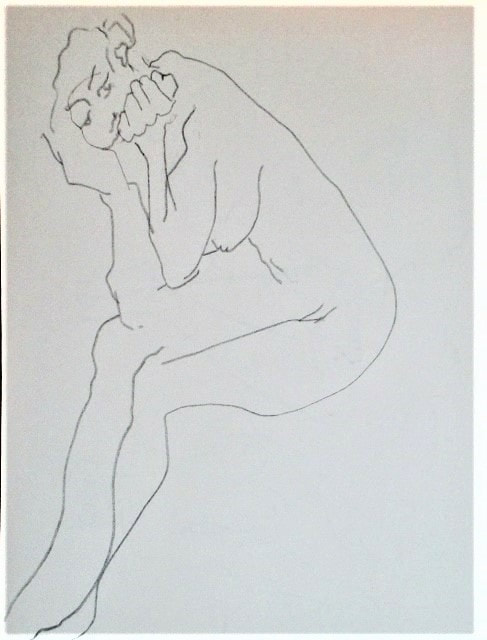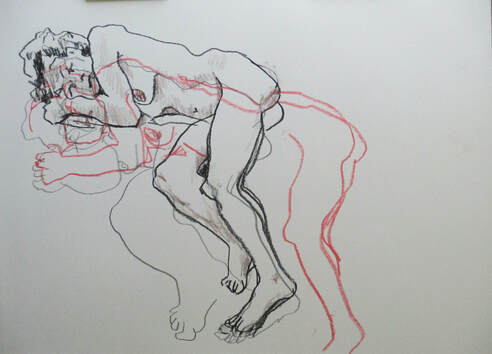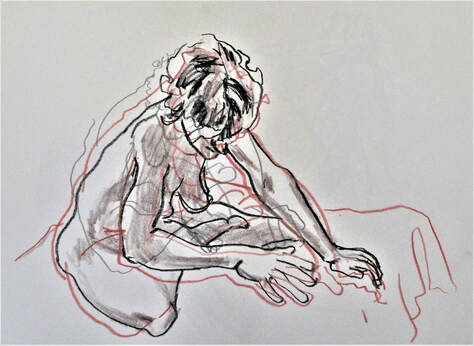
To make a blind contour drawing the artist picks a spot at random at the edge of the model, and convinces herself that the point of her pencil or pen is touching that spot on the actual person. Then, moving slowly enough to maintain the self-delusion, she works her way carefully around the outer contour of the form of the model, slowly progressing along its outline and not taking her eye from it, even to check on how the drawing is going. When that curve comes to an end, the artist can start at a new point either by looking at the drawing or not. Up to her.*
I turn to blind contour when I want to settle down a bit. I also find this method very helpful in bringing me back to a sensitivity of curve and direction of line.
I turn to blind contour when I want to settle down a bit. I also find this method very helpful in bringing me back to a sensitivity of curve and direction of line.

A contour drawing is never an accurate drawing; in fact it is a horror of distortion. To create a more accurate drawing I pick up a red crayon for a second pass, aligned with the first. I relax the rules a bit and allow myself to look at the paper when I need to establish my location. Then I allow myself to go back a third time, now with a very dark Conte crayon, and this time look at the drawing even more. The drawing becomes more accurate not only because I am looking more, but also because I am learning from each iteration that I went too far this way or that.

Another reason I enjoy this work so much is that it allows me to make and show my corrections without the tedious labor of getting everything right the first time. Long ago I discovered that insisting on getting things right the first time is a miserable way to live.
Clearly not even the third iteration is completely accurate. It would be easy to tighten it up, but that is not my preference.
Because I do not obliterate the earlier passes, I consider these drawings as examples of pentimento, the practice of leaving, albeit regretting, mistakes. Tongue in cheek, I sometimes refer to them as pentimentissimo, meaning the most regrettable.
Occasionally a blind contour drawing has just enough accuracy to be thoroughly humorous, and I leave it be.
*I remind the reader that I am committed to the use of the feminine form of the personal pronoun when referring to a person of undetermined gender, in case you are wondering if I am confused about my own.
Clearly not even the third iteration is completely accurate. It would be easy to tighten it up, but that is not my preference.
Because I do not obliterate the earlier passes, I consider these drawings as examples of pentimento, the practice of leaving, albeit regretting, mistakes. Tongue in cheek, I sometimes refer to them as pentimentissimo, meaning the most regrettable.
Occasionally a blind contour drawing has just enough accuracy to be thoroughly humorous, and I leave it be.
*I remind the reader that I am committed to the use of the feminine form of the personal pronoun when referring to a person of undetermined gender, in case you are wondering if I am confused about my own.
 RSS Feed
RSS Feed